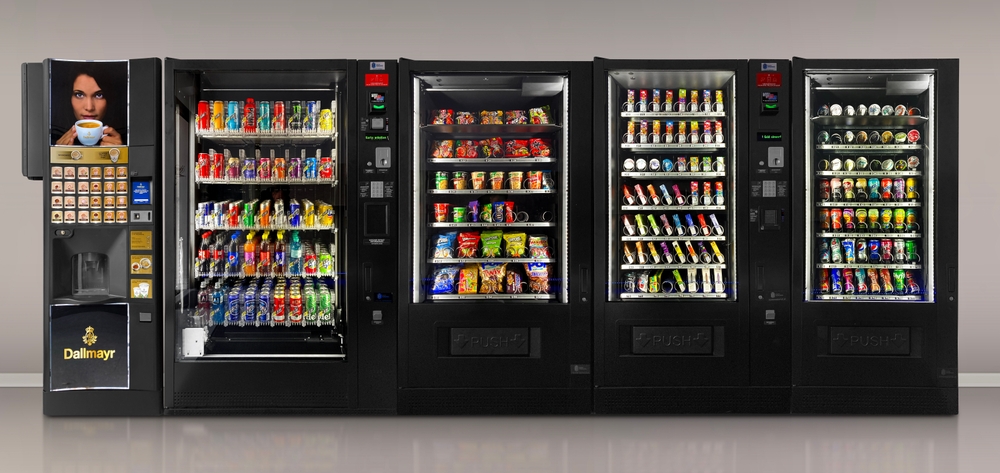Canadians are increasingly seeking ways to generate additional income streams without taking on second jobs or committing to time-intensive ventures. Passive income options have grown significantly, fuelled by digital platforms, flexible financial products, and opportunities that utilise existing assets. Here are 22 overlooked ways Canadians are boosting passive income.
Dividend Reinvestment Plans from Canadian Banks

Several Canadian banks, including RBC, TD, and Scotiabank, offer Dividend Reinvestment Plans (DRIPs). Instead of receiving dividends as cash, shareholders can automatically reinvest them to purchase additional shares. This strategy allows investors to compound their returns over time without paying trading fees on reinvested dividends. Many Canadian blue-chip companies, such as Enbridge and Fortis, also provide DRIP options. The approach is particularly beneficial for long-term investors looking to build wealth passively. Since the shares are bought regularly, investors also benefit from dollar-cost averaging, which reduces the impact of market volatility on portfolio growth.
Rental Income through Basement Suites and Secondary Units

Many Canadian homeowners are creating passive income streams by converting basements or secondary suites into rental properties. Cities such as Toronto, Vancouver, and Calgary allow legal secondary units under specific zoning regulations. This strategy provides consistent rental income while increasing property value. For example, a basement unit in Toronto can fetch between CA$1,200 and CA$1,800 monthly, depending on location and amenities. Landlords must comply with safety codes, obtain permits, and declare rental earnings as taxable income. For families with unused space, this is one of the most straightforward ways to offset mortgage payments and steadily generate passive cash flow.
Peer-to-Peer Lending via Canadian Platforms

Peer-to-peer lending platforms in Canada, such as Lending Loop, allow individuals to invest in small business loans. Investors earn passive income by receiving interest payments on the funds they provide. Returns can range between 5% and 15% annually, depending on the borrower’s risk profile. While the model offers higher returns than traditional savings accounts, it carries the risk of borrower default. Canadian securities regulators oversee these platforms, ensuring compliance and transparency. For investors seeking alternatives to stocks and bonds, peer-to-peer lending can be a compelling option to diversify portfolios and earn ongoing income without active day-to-day management.
REITs Listed on the Toronto Stock Exchange

Real Estate Investment Trusts (REITs) are an accessible way for Canadians to earn passive income without directly owning property. Several REITs are listed on the Toronto Stock Exchange, including RioCan, SmartCentres, and Canadian Apartment Properties REIT. These companies pool investor funds to purchase and manage real estate, distributing most of their profits as dividends. Yields typically range from 4% to 7% annually, depending on the sector and market conditions. Since REITs trade like stocks, investors can buy and sell them easily, providing liquidity. For Canadians seeking a steady income, REITs combine real estate exposure with the flexibility of equities.
Royalties from Self-Published eBooks and Audiobooks

Self-publishing eBooks and audiobooks has become a viable way for Canadians to earn royalties. Platforms such as Amazon Kindle Direct Publishing and Kobo Writing Life allow authors to publish digital works and receive up to 70% in royalties. With the growing popularity of audiobooks, services like Audible and Findaway Voices provide additional income channels. Once created, digital books continue to generate sales with little ongoing effort, making them a strong passive income source. Marketing and visibility remain crucial, but successful authors can build a steady revenue stream. This approach appeals to Canadians with expertise or creative writing skills.
High-Interest Savings Accounts with Online-Only Banks

High-interest savings accounts (HISAs) offered by Canadian online-only banks provide a low-risk passive income option. Institutions such as EQ Bank, Tangerine, and Motive Financial regularly offer interest rates above those of traditional brick-and-mortar banks. While rates vary, some online HSAs provide annual yields of 2% or higher, making them attractive for short-term savings or emergency funds. Unlike investments in equities or real estate, HISAs are insured by the Canada Deposit Insurance Corporation (CDIC) up to CA$100,000, adding a layer of security. For Canadians prioritising safety and liquidity, HISAs remain a practical choice for generating consistent passive income.
Cashback from Canadian Credit Card Reward Programmes

Cashback credit cards are a simple way for Canadians to earn passive income on everyday purchases. Cards such as the Tangerine Money-Back Credit Card, Scotiabank Momentum Visa Infinite, and CIBC Dividend Visa Infinite offer between 1% and 4% cashback in categories like groceries, gas, and recurring bills. The rewards accumulate automatically and can be applied as statement credits or deposited into a bank account. Many issuers also provide welcome bonuses that boost initial earnings. Since Canadians spend regularly on essentials, using cashback cards strategically ensures steady returns with no extra effort, provided balances are paid off monthly.
Selling Stock Photos on Canadian and Global Platforms

Canadians with photography skills can generate passive income by licensing stock images on platforms such as Shutterstock, Adobe Stock, and iStock. Contributors upload photos once and receive royalties each time their work is downloaded. Payments typically range from CA$0.25 to CA$5 per sale, with higher earnings for exclusive contributors or premium images. Popular categories include business, lifestyle, food, and Canadian landscapes. Over time, an extensive portfolio can generate consistent monthly revenue. With the growing demand for online content, stock photography provides a scalable income stream for Canadians willing to build and maintain a quality image collection.
Earning from YouTube Content Monetisation

YouTube offers Canadians a global platform to earn passive income by monetising videos. Creators who meet the eligibility requirements of 1,000 subscribers and 4,000 watch hours can join the YouTube Partner Programme, which enables ad revenue, channel memberships, and Super Chats. Earnings vary widely, but successful channels can make between CA$3 and CA$7 per 1,000 ad views depending on audience demographics. Additional revenue streams include brand sponsorships and affiliate links. While content creation requires upfront effort, videos continue to generate views and income over time. This makes YouTube one of the most popular digital avenues for Canadians seeking ongoing passive earnings.
Creating and Licensing Online Courses

Online education has surged in popularity, and Canadians are leveraging platforms such as Udemy, Skillshare, and Teachable to create courses that generate royalties. Topics range from business and technology to personal development and design. Once uploaded, courses can earn income for years with minimal updates. Revenue depends on enrolments, with Udemy instructors typically earning between CA$2 and CA$10 per student after fees. Skillshare pays based on watch time, offering a steady monthly payout. Creating a high-quality course requires upfront planning, but once established, it becomes a recurring income source, especially for Canadians with specialised expertise or teaching skills.
Income from Etsy and Shopify Digital Products

Etsy and Shopify enable Canadians to sell digital products such as printables, design templates, and software tools. Unlike physical goods, digital products have no inventory or shipping costs, making them ideal for passive income. Sellers can earn between CA$100 and several thousand per month, depending on product quality and marketing reach. Popular items include resume templates, wall art, and productivity planners. Shopify offers customisation for building independent online stores, while Etsy provides a large built-in customer base. Once digital files are created and uploaded, they can be sold repeatedly, generating ongoing income with little ongoing maintenance required.
Affiliate Marketing with Canadian Retailers

Affiliate marketing allows Canadians to earn commissions by promoting products from retailers such as Amazon Canada, Best Buy, and Indigo. Through affiliate programmes, website owners, bloggers, or social media influencers share unique links that track sales. Commissions vary from 1% to 10% depending on the product category and retailer. For example, Amazon Associates Canada offers up to 10% on luxury beauty products and 3% on electronics. The model requires building an audience through websites, YouTube, or social media platforms. Once content is created, affiliate links can generate passive income for months or years as long as they continue driving sales.
Investing in Exchange-Traded Funds (ETFs)

Exchange-Traded Funds (ETFs) are a popular passive income option for Canadians seeking diversification. ETFs pool money from investors to buy a mix of stocks, bonds, or other assets and trade on exchanges like individual stocks. Canadian favourites include Vanguard FTSE Canada All Cap Index ETF (VCN) and iShares Core S&P/TSX Capped Composite ETF (XIC). Investors earn through dividends and long-term growth, with dividend-focused ETFs yielding between 2% and 4% annually. Management fees are typically lower than those of mutual funds, often under 0.25%. For Canadians building long-term wealth, ETFs provide an efficient, low-cost strategy to generate passive income consistently.
Parking Space Rentals in High-Demand Urban Areas

In cities like Toronto, Vancouver, and Montreal, parking shortages have created opportunities for passive income through space rentals. Homeowners and condo residents with unused driveways or parking spots can rent them out monthly or daily. Platforms such as Spacer and Kijiji make it easy to list spaces and connect with drivers. Monthly rates range from CA$100 to over CA$300, depending on location, with downtown areas commanding the highest prices. This requires little maintenance beyond communication and payment collection. For Canadians living in high-demand areas, parking space rentals are a straightforward way to convert unused assets into recurring income.
Vending Machine Ownership in Community Centres

Vending machine ownership is a relatively low-maintenance way for Canadians to earn passive income. Placing machines in community centres, gyms, or office buildings ensures consistent foot traffic and sales. Start-up costs include purchasing machines, stocking inventory, and securing placement agreements with property owners. Profits depend on location, but owners can typically earn CA$200 to CA$500 per machine each month after expenses. Machines selling healthier options often perform well in community settings. While occasional restocking and servicing are required, the model generates recurring revenue. For Canadians seeking semi-passive business opportunities, vending machines are a proven and scalable choice.
Subletting Storage Space Through Online Platforms

Unused basements, garages, and sheds are being monetised in Canada through peer-to-peer storage platforms. Websites like Neighbor and StoreAtMyHouse allow homeowners to rent out spare space to individuals seeking affordable storage. Earnings vary by location and size, with urban areas commanding higher rates. For example, a garage in Toronto could generate CA$100 to CA$250 monthly. Unlike traditional self-storage companies, homeowners provide a cost-effective alternative for renters while benefiting from recurring income. Insurance coverage and platform vetting processes help reduce risk. This option allows Canadians to leverage idle property areas and convert them into dependable passive income streams.
Cashback Apps Tailored to Canadian Shoppers

Cashback apps are another overlooked way for Canadians to accumulate passive income from everyday spending. Popular platforms include Rakuten Canada, Drop, and Ampli. These apps reward users with cash or points for shopping at partner retailers such as Walmart, Amazon, and Indigo. Earnings typically range from 1% to 10% of purchase amounts, with seasonal promotions offering even higher returns. Rewards can be redeemed as gift cards or transferred as cash. Since the apps link directly to purchases, income accumulates automatically with little effort. For Canadians who shop online regularly, cashback apps provide a steady and low-risk income stream.
Income from Domain Flipping and Website Sales

Domain flipping and website sales present an online investment avenue for Canadians. By purchasing undervalued domain names or building niche websites, individuals can later sell them at a profit. Platforms such as Flippa and GoDaddy Auctions facilitate transactions. Profits vary widely, with some domains selling for a few hundred dollars and others fetching thousands. Passive income can also come from websites that generate advertising or affiliate revenue before being sold. While the market is competitive, research into keyword trends and branding potential improves success rates. For tech-savvy Canadians, digital real estate is a flexible and scalable income source.
Car-Sharing Programmes like Turo in Canada

Car-sharing platforms such as Turo allow Canadians to earn income by renting out their vehicles. Owners list cars on the platform, set availability, and Turo manages insurance coverage and payments. Earnings vary based on vehicle type, location, and rental frequency. For example, a mid-range car in Toronto or Vancouver can generate CA$500 to CA$1,000 monthly. Luxury vehicles and SUVs command even higher rates. Maintenance and cleaning are required, but overall time investment is low. As urban Canadians increasingly favour car-sharing over ownership, platforms like Turo provide an efficient way to turn depreciating assets into recurring revenue.
Music Royalties from Streaming Platforms

Musicians in Canada can earn passive income through royalties from streaming services like Spotify, Apple Music, and YouTube Music. Once uploaded via distribution platforms such as DistroKid or TuneCore, songs generate revenue each time they are played. Payouts are typically between CA$0.003 and CA$0.005 per stream, which can accumulate significantly with larger audiences. Canadian artists also qualify for royalties through SOCAN (Society of Composers, Authors and Music Publishers of Canada). While building an audience requires effort, tracks can continue generating income for years after release. For creative Canadians, music royalties represent an enduring passive revenue stream.
Selling Print-on-Demand Merchandise

Print-on-demand services enable Canadians to design and sell customised merchandise without holding inventory. Platforms such as Printful, Redbubble, and Teespring handle printing, packaging, and shipping, allowing sellers to focus on design and marketing. Products include T-shirts, mugs, tote bags, and phone cases. Profit margins vary, but many creators earn between CA$2 and CA$10 per item. Once designs are uploaded, items remain available for purchase indefinitely, generating ongoing sales. This model suits Canadians with graphic design skills or creative ideas, as minimal upfront investment is required. Over time, a strong product catalogue can yield steady passive income.
Passive Income from Cryptocurrency Staking

Cryptocurrency staking is gaining traction among Canadians as a source of passive income. By holding and “staking” coins such as Ethereum, Cardano, or Solana in digital wallets, investors support blockchain networks and receive rewards. Annual yields vary but often range from 4% to 12%, depending on the cryptocurrency and platform. Staking is available through exchanges like Coinbase, Binance, and Kraken, with some Canadian platforms also offering services. While returns can be attractive, risks include price volatility and platform security concerns. For Canadians comfortable with digital assets, staking provides a modern way to generate recurring passive income.
21 Products Canadians Should Stockpile Before Tariffs Hit

If trade tensions escalate between Canada and the U.S., everyday essentials can suddenly disappear or skyrocket in price. Products like pantry basics and tech must-haves that depend on are deeply tied to cross-border supply chains and are likely to face various kinds of disruptions
21 Products Canadians Should Stockpile Before Tariffs Hit